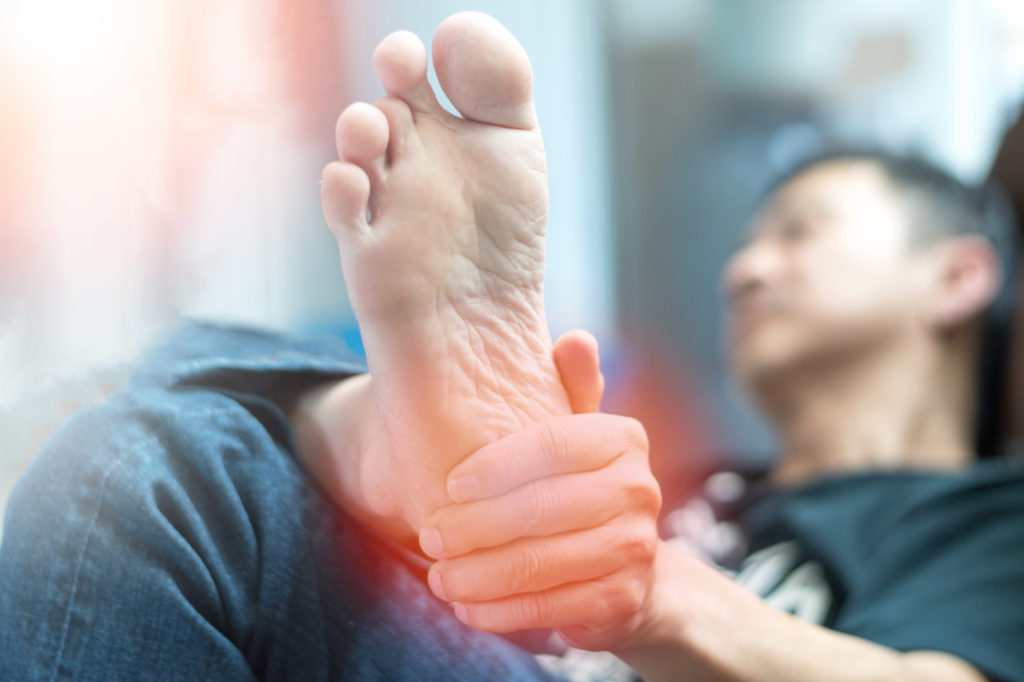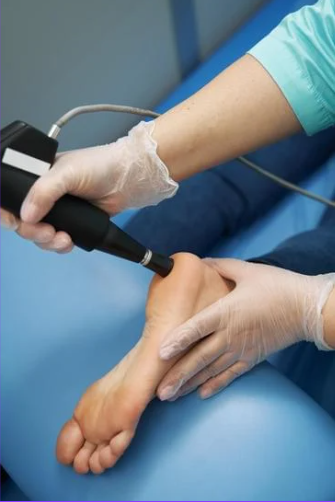There’s nothing like the adrenaline rush of sprinting across the finish line, the rhythmic cadence of a morning run, or the inexplicable joy of nailing your yoga headstand. But for many athletes, the exhilaration of their favorite activities is often accompanied by an unwelcome companion—foot pain, specifically Plantar Fasciitis. This common foot condition can be a formidable obstacle, causing discomfort and potentially sidelining even the most committed athlete.
In this comprehensive guide tailored for the sports enthusiast, we’ll cover everything you need to know about Plantar Fasciitis, from understanding the condition and its impact on athletes to exploring the latest treatments, including the revolutionary Shockwave Therapy. Whether you’re a weekend warrior, a seasoned marathoner, or a professional athlete, the insights in this guide will be your stepping stones to a healthier, more resilient athletic future.
Understanding Plantar Fasciitis
Plantar Fasciitis is not some abstract medical jargon—it’s a real and sometimes excruciatingly painful experience for those who have dealt with it. Athletes are particularly in the line of fire for this condition due to many athletic activities’ repetitive strain and high-impact nature.
Plantar Fasciitis is essentially the inflammation of the plantar fascia, a thick band of tissue that runs along the bottom of your foot from the heel bone to the base of your toes. The plantar fascia acts as a shock absorber for the foot, and when it becomes strained, micro-tears can occur, leading to inflammation and pain.
Understanding The Roots of Plantar Fasciitis
Plantar fasciitis is a widespread foot issue that surfaces when the thick band of tissue (plantar fascia) linking the heel bone and the toes becomes inflamed. Several elements can lead to the onset of plantar fasciitis:
- Excessive or High-Impact Activities: Persisting stress on the feet, notably from actions like running or dancing, can put a strain on the plantar fascia, resulting in inflammation.
- Inappropriate Footwear: Sporting shoes that lack sufficient support or do not fit correctly can play a role in the emergence of plantar fasciitis.
- Biomechanical Complications: Irregularities in the structure or functioning of the foot, such as flat feet or high arches, can heighten the risk of plantar fasciitis.
- Age and Weight Factors: Plantar fasciitis tends to be prevalent among individuals in their middle age and those carrying extra weight, as the additional mass can impose more stress on the feet.
Signs and Symptoms

Plantar Fasciitis pain is commonly described as a stabbing sensation, often at the base of the foot near the heel. Athletes might feel it most intently during their first steps in the morning, after long periods of rest, or after intense activity. The pain can be severe enough to interrupt their training and performance. Individuals with plantar fasciitis may experience the following symptoms:
- Heel Pain: Sharp or stabbing pain, typically felt near the heel, is a hallmark symptom of plantar fasciitis. Pain is often most intense with the first steps in the morning.
- Foot Discomfort: Aching or burning sensations along the bottom of the foot, extending from the heel to the toes.
- Stiffness: Stiffness in the foot, especially after periods of rest or inactivity.
Experts Weigh In on Athlete-Specific Risks
Athletes face a unique set of risks for developing Plantar Fasciitis due to the repetitive nature of certain movements, the presence of frequent high-impact activities, and in some cases, poorly fitting athletic shoes. For instance, sports like running and basketball can place an enormous strain on the foot arch and fascia, increasing the likelihood of developing this condition.
Diagnosis and Traditional Treatments
Diagnosing Plantar Fasciitis usually involves a physical examination and, in some cases, imaging tests, to rule out other potential causes of foot pain. Most athletes know the standard advice for treating the condition: rest, ice, proper footwear, and targeted stretching exercises.
A Deep-Dive into Traditional Therapies
The go-to therapies for Plantar Fasciitis have stood the test of time for their effectiveness in providing relief. These include:
- Rest and Activity Modification: Staying off the feet as much as possible, especially when the pain is at its peak, can allow the inflamed fascia to heal.
- Icing: Applying ice to the affected area helps curb inflammation and temporarily relieve pain.
- Orthotics and Supportive Footwear: Specialized footwear and orthotic inserts can provide additional support and cushioning for the foot, reducing strain on the plantar fascia.
- Physical Therapy: Exercise programs designed to strengthen the foot muscles, improve flexibility, and correct imbalances can be instrumental in recovery.
Benefits of Shockwave Therapy for Plantar Fasciitis
Shockwave Therapy, also referred to as Radial Pressure Wave (RPW) Therapy, emerges as a beacon of hope for athletes battling Plantar Fasciitis. This non-invasive, all-natural treatment option does not require surgeries or medications. Here’s why Shockwave Therapy could be the turning point in your recovery:
- Versatile Treatment: Shockwave Therapy’s adaptability is one of its most compelling features. It can target various parts of the body, including the sensitive areas affected by Plantar Fasciitis, without necessitating any special preparation beforehand. This flexibility allows athletes to receive focused treatment directly where it’s needed the most.
- Immediate Relief: One of the most remarkable benefits of Shockwave Therapy is the immediate relief from symptoms that many athletes experience after just a single session. While individual results may vary, continued treatment sessions often lead to even more significant alleviation of pain and discomfort, making it an appealing option for those seeking rapid improvement.
- Alternative Healing: For athletes who prefer to avoid the potential side effects of medications or the risks associated with invasive surgical procedures, Shockwave Therapy presents a valuable alternative. By promoting natural healing mechanisms within the body and relieving pain without the use of drugs, this therapy aligns with the principles of holistic health and well-being.
The combination of these advantages makes Shockwave Therapy a promising option for athletes eager to return to their best form, free from the limitations of Plantar Fasciitis.
The Role of Shockwave Therapy in Athlete Rehabilitation
While the traditional treatments for Plantar Fasciitis are effective, they can be slow to yield results, and the road to recovery can challenge the patience of the most disciplined athletes. This is where Shockwave Therapy enters the picture as a game-changer.
Shockwave Therapy harnesses the power of acoustic waves to stimulate the body’s natural healing response. It’s non-invasive, entails minimal risk, and has been lauded for its effectiveness in promoting the regeneration of damaged tissue.
Shockwave Therapy For Plantar Fasciitis Explained
A closer look at Shockwave Therapy, its mechanisms, and its benefits for athletes dealing with Plantar Fasciitis:
- Mechanism: Shockwave Therapy works by delivering acoustic waves to the affected area, breaking down scar tissue, and stimulating blood flow to accelerate the healing process.
- Benefits: Athletes treated with Shockwave Therapy report reduced pain, improved function, and faster recovery times, enabling them to get back to their training schedules with greater ease.
How Does Shockwave Therapy Work?

Shockwave Therapy leverages the science of acoustic pressure to initiate a healing response within the body. Here’s a breakdown of the key mechanisms that underline its effectiveness:
- Acoustic Pressure Shock: The therapy generates shockwaves, a type of acoustic pressure, that penetrates the affected area. These shockwaves are powerful enough to break up calcium deposits, often contributing to soft tissue pain. Additionally, the shockwaves help relieve muscle tension and stimulate the flow of blood, enriching the area with necessary nutrients and oxygen. This process also boosts collagen production, a crucial building block for tissue repair and regeneration.
- Micro-Trauma Healing Response: The shockwaves create micro-trauma in the tissues, which may sound counterintuitive but beneficial. This controlled micro-trauma induces the body’s natural healing response, leading to a reduction in pain and inflammation. Over time, this process encourages the natural and holistic healing of the injured tissue.
- Targeted Treatment: One of the advantages of Shockwave Therapy is its ability to target the injured soft tissue needing treatment precisely. This ensures that the healing effects of the therapy are focused exactly where they’re needed, maximizing effectiveness. Patients often describe experiencing a pulsing sensation during the procedure, indicating the therapy’s targeted action.
By addressing the root causes of pain and facilitating the body’s self-healing capabilities, Shockwave Therapy stands out as a highly effective treatment for athletes suffering from Plantar Fasciitis. With its non-invasive nature and direct approach to healing, it’s no wonder that more athletes are turning to this innovative therapy to get back on track with their training and performance goals.
Long-Term Management and Recovery
Recovering from Plantar Fasciitis is not just about addressing the immediate symptoms; it’s a long-term commitment to foot health and injury prevention. Here we explore the steps athletes can take to manage their condition and optimize their recovery.
Lifestyle Adjustments and Exercise Regimens
Making lasting lifestyle changes, such as maintaining a healthy weight and engaging in regular foot-strengthening exercises, is crucial for preventing the recurrence of Plantar Fasciitis. We will detail specific exercises that focus on stretching and strengthening the calf muscles and Achilles tendon, which can in turn alleviate strain on the plantar fascia.
The Importance of Proper Footwear and Foot Care
Athletes depend on their feet for performance, making proper footwear a critical consideration in their overall health and well-being. We’ll share expert tips on selecting the right shoes for different sports and activities, as well as insight into the role of foot care in preventing future injuries.
Shockwave Therapy For Plantar Fasciitis
Shockwave therapy for plantar fasciitis near me is becoming increasingly recognized as a highly effective treatment for those suffering from the condition. If you are experiencing persistent heel pain, searching for shockwave therapy for plantar fasciitis near you could lead you to a promising solution. With the technology advancing, shockwave therapy for plantar fasciitis near me offers a non-invasive treatment option that may reduce the need for medication or surgery. Many patients have found relief after looking up shockwave therapy for plantar fasciitis near me and undergoing the therapy. This treatment, which involves the delivery of shock waves to the affected area, is worth considering for anyone who has been searching for shockwave therapy for plantar fasciitis near me and desires a quicker return to daily activities. It’s advisable to consult with healthcare professionals who offer shockwave therapy for plantar fasciitis to understand if it’s right for your specific condition. Remember, finding a clinic that specializes in shockwave therapy for plantar fasciitis near me could be the first step towards experiencing significant pain relief and recovery.
Conclusion
Plantar Fasciitis presents a formidable challenge for athletes, but with the right knowledge and treatment, it need not be a career-ending diagnosis. This guide has illuminated the path to recovery, integrating traditional treatments with innovative therapies like Shockwave Therapy. We encourage athletes to seek professional guidance and to approach their rehabilitation with patience and determination.
If you’re an athlete who has grappled with Plantar Fasciitis, we invite you to share your experiences and insights in the comments below. By opening up the discussion, we can support one another and foster a community of strength and resilience in the face of foot pain.
If you’re considering shockwave therapy for plantar fasciitis, Kinetic Rehab & Spine is here to guide you through the process. Our tailored approach and commitment to patient care ensure that you receive the comprehensive support you need to find relief fast. Contact us today to learn more about how shockwave therapy can transform your life. You can also read the countless testimonials of those who have seen changes in their health. Contact us at https://kineticrehabspine.com/contact-us/

